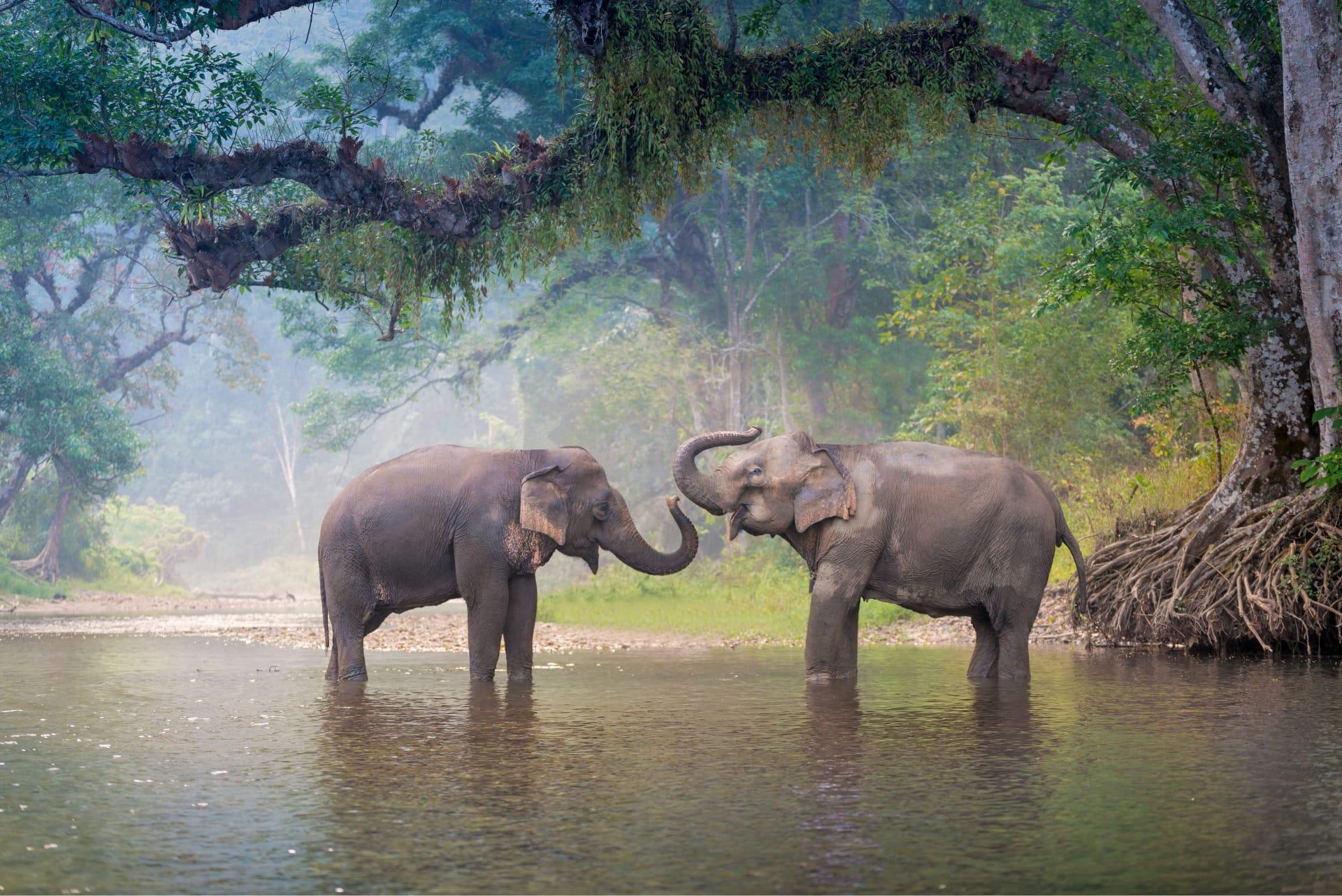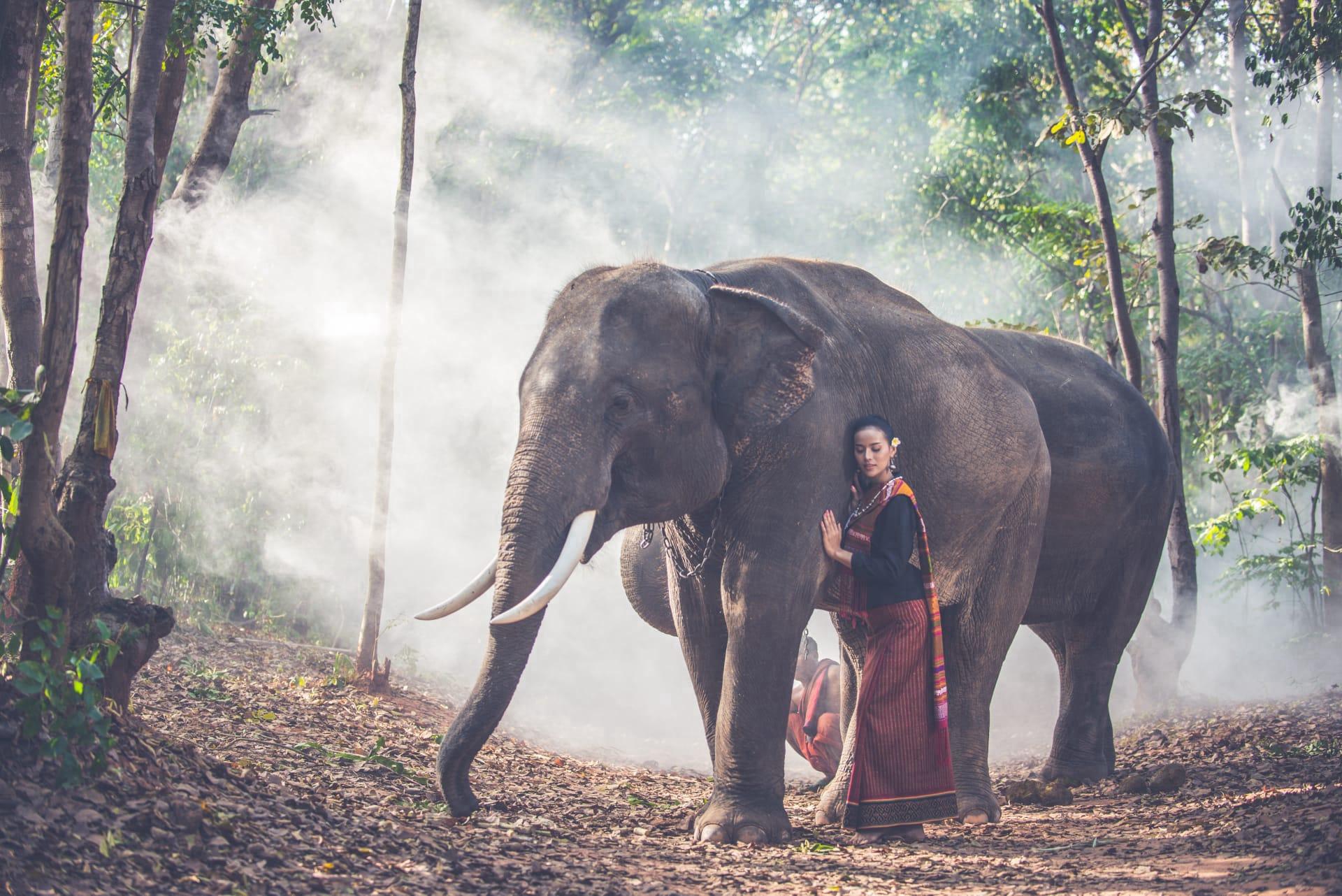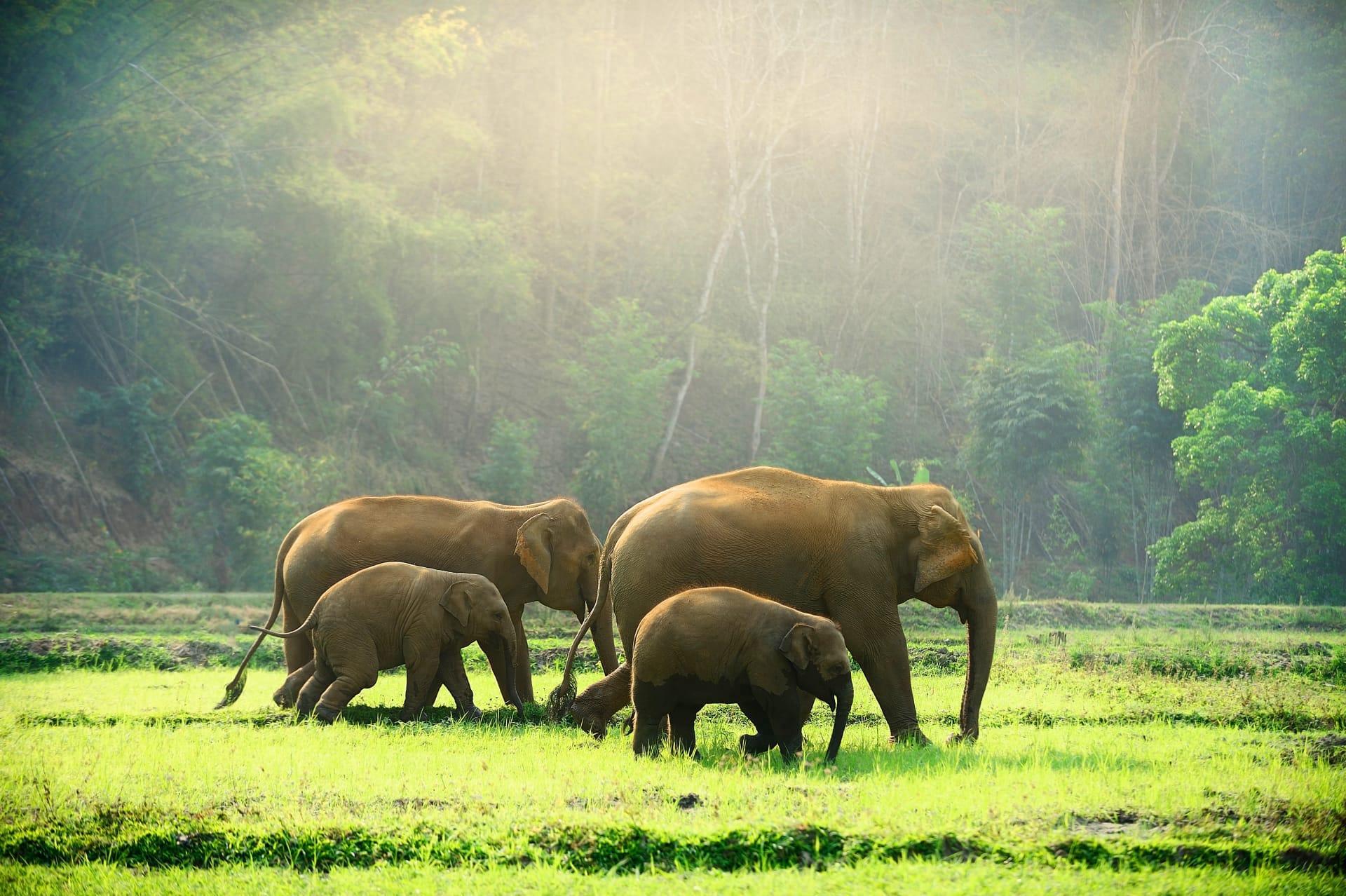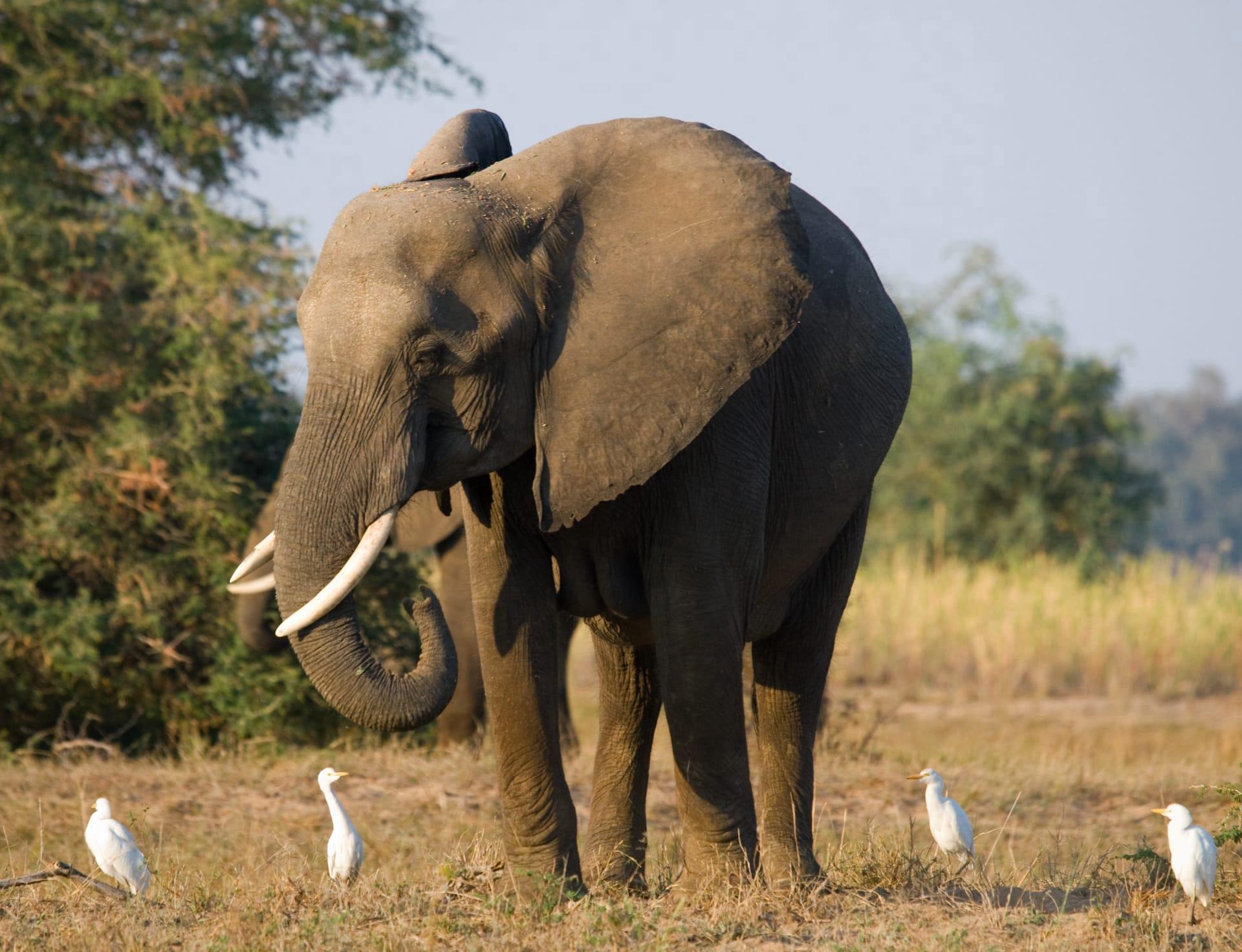Elephant
- Home /
- Mini Encyclopedia /
- Animal /
- Elephant
1
Elephants, majestic creatures that have fascinated humans for centuries, belong to the family Elephantidae and are classified into three species: the African bush elephant, the African forest elephant, and the Asian elephant. The African bush elephant, Loxodonta africana, is the largest, with males standing up to 13 feet tall and weighing as much as 7 tons. The smaller African forest elephant, Loxodonta cyclotis, dwells in the dense rainforests of west and central Africa. The Asian elephant, Elephas maximus, found primarily in India and Southeast Asia, is distinguished by its smaller size and more rounded ears.
Elephants are spread across varied habitats. The African bush elephant roams the savannas and plains of 37 African countries. The African forest elephant is more reclusive, residing in the equatorial forests of central and west Africa. In Asia, elephants are found in a range of environments from wet forests to dry grasslands in countries like India, Sri Lanka, Myanmar, Indonesia, and Thailand. Their distribution is heavily influenced by human activity, leading to fragmented populations, particularly in Asia.

2
Question: Do elephants really have exceptional memories?
Answer: Yes, elephants indeed have remarkable memories. This is not just a myth; scientific studies support this. Elephants can remember watering holes that they haven't visited for years, and they recognize old friends after long separations. Their spatial memory, crucial for survival in the wild, allows them to navigate vast territories. This memory also plays a pivotal role in their complex social structures, helping them remember family members and forge long-term social bonds.

3
Elephants have developed unique survival strategies to thrive in their environments. One of their key strategies is their complex social structure, led by a matriarch. This female elder guides the herd, makes decisions about travel, and provides a wealth of knowledge to younger members. Elephants also communicate over long distances using infrasound, low-frequency sounds that travel through the ground, which are imperceptible to humans. This allows them to convey messages about water sources, threats, or mating opportunities across vast distances.
Another crucial strategy is their ability to modify their habitat. Elephants are known as "ecosystem engineers" because of their ability to transform landscapes. They knock down trees, creating clearings that encourage new growth, and dig waterholes that provide water not just for themselves but for other species as well. This behavior has a significant impact on their environment, affecting the distribution of plant and animal species.

4
In the ecosystem, elephants play a critical role in maintaining the balance. Their feeding habits, which involve uprooting trees and breaking branches, help in shaping the woodland and forest landscapes. This creates a mosaic of habitats for other wildlife. Moreover, as they travel, they disperse seeds through their dung, aiding in the propagation of various plant species.
Elephants also have a significant impact on their local environments. Their waterhole digging activities during the dry season are crucial for their survival and benefit many other species. By maintaining open areas and trails, they facilitate movement for other animals. Their role in the ecosystem is so pivotal that their absence can lead to substantial changes in the landscape, affecting biodiversity and the structure of the vegetation.

5
Film: "The Elephant Queen" (2019) is a captivating documentary that originates from the United Kingdom. Narrated by Chiwetel Ejiofor, it tells the story of Athena, a matriarch elephant, as she leads her herd across the African savanna in search of water during a drought. The film beautifully captures the emotional depth and intelligence of elephants, offering insights into their social structures and survival challenges.
Book: "The Elephant Whisperer" by Lawrence Anthony and Graham Spence (2009, South Africa) recounts the true story of a conservationist who accepts a herd of 'rogue' wild elephants on his game reserve in South Africa. This book provides a profound and moving insight into the life of these majestic creatures and the deep bond that can form between humans and animals.
Book: "Elephant Company" by Vicki Croke (2014, United States) tells the true story of James Howard Williams, known as 'Elephant Bill', who during World War II, used his knowledge of elephants in Burma to help defeat the Japanese. The book offers a fascinating look into the history of elephants in war and their extraordinary abilities and loyalty.